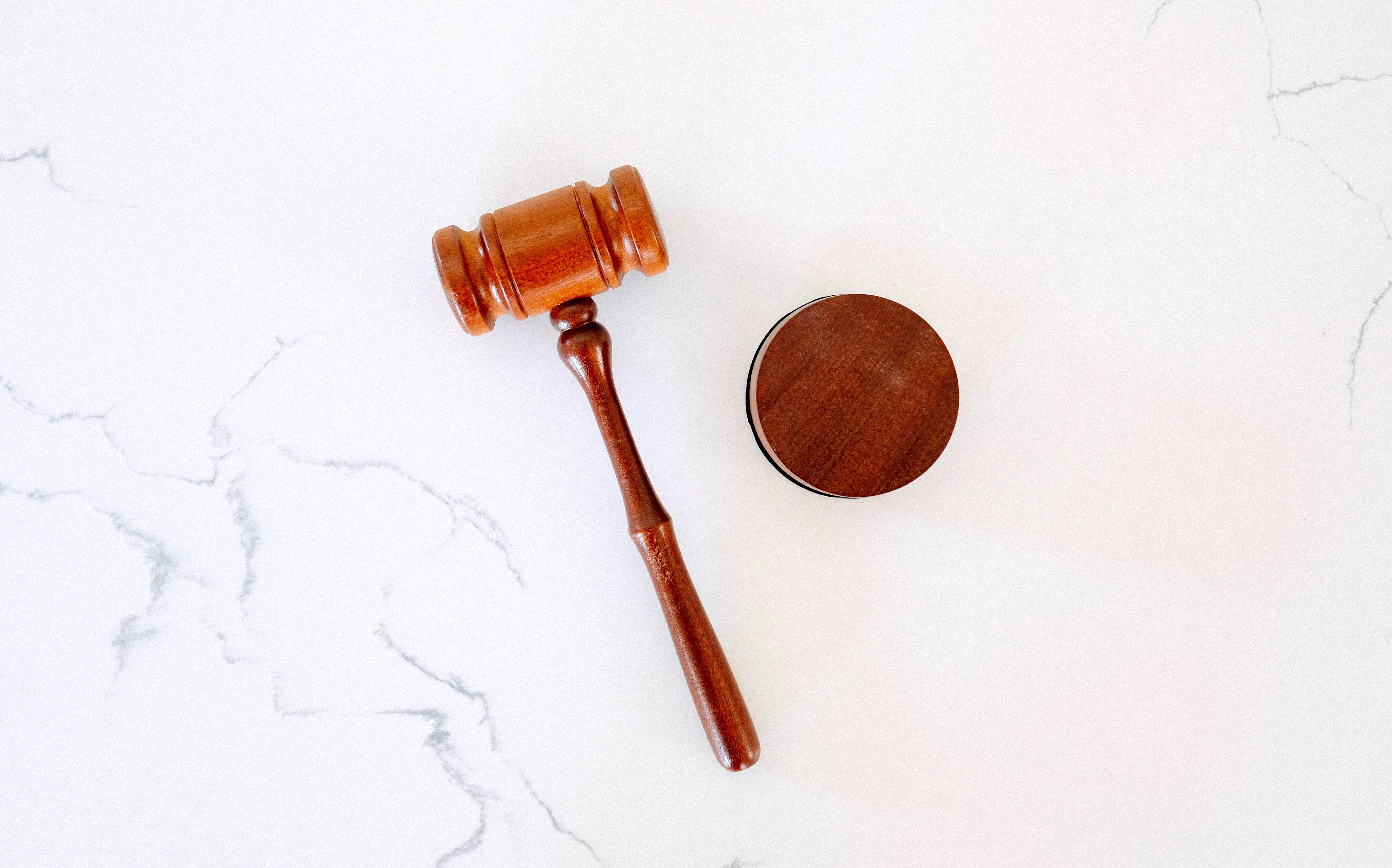A Birkin Bag NFT lawsuit

A litigious week in crypto saw an NFT trademark lawsuit and a controversial SEC enforcement. [Image via Unsplash]
There’s never a dull moment on the blockchain. Here’s what you need to know this week:
A lawsuit over Birkin Bag NFTs prompted a First Amendment debate. A closer look at the NFT trademark case.
The SEC brought an enforcement action against Kraken. The crypto industry balked at the perceived overreach.
Noteworthy numbers. The latest inflation report and other key stats to know this week.
SECURE THE BAG
How Birkin Bag NFTs prompted a First Amendment debate about art in the crypto era
When is NFT art … legally art? That was the question at the center of a lawsuit brought by luxury fashion brand Hermès, the maker of the prestigious Birkin Bag, against digital artist Mason Rothschild and his buzzy, unaffiliated MetaBirkins NFT collection, which consists of eccentric, digital versions of the namesake accessory.
Last Wednesday, a federal jury in Manhattan determined that the NFT collection violated Hermès’ trademark rights, awarded the company $133,000 in damages, and introduced uncertainty into the still-nascent NFT creator economy by ruling that Rothschild’s NFTs were not protected speech.
This lawsuit raised eyebrows across art and crypto communities alike, as creators, buyers, and brands all debated what constitutes artistic expression in the age of the NFT. Let’s take a closer look.
What are MetaBirkin NFTs?
Created by designer Mason Rothschild in 2021, MetaBirkin NFTs are digitally reimagined versions — often fur covered, and vividly dyed — of the iconic Birkin Bag, a luxury status symbol that often retails for tens of thousands of dollars.
Rothschild sold 100 NFTs for $450 each, and he received 75% of secondary sales, netting about $125,000.
He described his MetaBirkin NFTs as an “ironic nod” to the elite purse.
Why did Hermès sue Rothschild for his NFT collection?
The Birkin parent company claimed its trademark was being diluted and that customers might mistakenly purchase unaffiliated digital goods.
A Hermès lawyer argued “the reason for [MetaBirkin] sales was the Birkin name,” and alleged Rothschild had monetary, not artistic, motivations, pointing to a text in which he asked influencers to “do one more shill post” to boost demand.
What was Rothschild’s legal defense?
Rothschild’s lawyer described him as “a conceptual artist” and argued that his MetaBirkin NFTs were art that was protected under the First Amendment as free speech. He also noted that the NFT collection explored Birkins as a “cultural symbol of rarefied wealth and status.”
Why did the jury side with Hermès, and how did Rothschild respond?
The nine-member jury decided that MetaBirkins were more akin to commodities — which are subject to strict trademark laws to prevent counterfeiting — and less like artwork where appropriation is protected, such as with Andy Warhol’s “Campbell’s Soup Can” series from 1961.
Rothschild's lawyer said it was a “great day for big brands and a terrible day for the First Amendment.” In an interview with Forbes, he also criticized Hèrmes for claiming to value art “but feel[ing] they have the right to choose what art IS and who IS an artist.”
In a statement, Rothschild said what “happened today was wrong … and will continue to happen if we don’t … fight.”
Why does it matter and what could it mean for the future of NFTs?
While crypto Twitter sounds off about what this case could mean for NFTs and creators, it’s important to note that the verdict in one of the first-ever NFT-related trademark cases was specifically about one instance of trademark infringement and not a broad ruling about NFTs in general. The lawsuit does raise plenty of questions though: Who gets to decide the artistic merits of NFT collections? Will we need to legally categorize different kinds of NFTs? What if Andy Warhol’s iconic Campbell’s Soup pieces had been issued on the blockchain?
NFTs remain an emerging technology that exists at the intersection of art and practical use cases — take Super Bowl MVP Rihanna, who recently sold “B*ich Better Have My Money” royalties as NFTs — so legal frameworks, with any luck, will evolve alongside the tech.
KRAK DOWN
Crypto Industry responds to SEC’s staking enforcement against Kraken
Last week, the Securities and Exchange Commission announced that the U.S.-based crypto exchange Kraken had agreed to pay the agency a $30 million fine for allegedly violating securities laws related to its crypto-asset staking service. As part of the agreement, Kraken also agreed to cease its staking program for U.S. users.
The news of this settlement from the SEC, and its potential impact on the industry, generated strong responses not only from key figures in crypto, but also those in government. (For more background on this issue, read Coinbase Chief Legal Officer Paul Grewal’s blog post explaining why “staking is not a security under the US Securities Act.”)
Here is some of the notable commentary:
Coinbase CEO Brian Armstrong responded by highlighting how valuable an innovation staking is for crypto, and that it brings “many positive improvements to the space, including scalability, increased security, and reduced carbon footprints.” Arguing that enforcements like this only encourage companies to take their operations offshore, Armstrong said “we need to make sure that new technologies are encouraged to grow in the U.S., and not stifled by lack of clear rules.”
SEC Commissioner Hester Peirce wrote a strongly-worded dissent in response to the agency’s actions against Kraken, arguing that “using enforcement actions to tell people what the law is in an emerging industry is not an efficient or fair way of regulating.” But most concerning, according to Peirce, was that “our solution to a registration violation is to shut down entirely a program that has served people well.”
Kraken co-founder Jesse Powell made a similar point when he observed on Twitter that the “‘This is wrong but I won’t tell you how to do it right. Want to find out if X works? Try it and see what happens.’ approach does not help the industry nor consumers.”
GOP Rep. Tom Emmer noted that consumers would be negatively impacted by the decision, since staking allows more people to “participate in building the next generation of the internet.” And as a result the SEC chairman’s “regulatory purgatory strategy hurts everyday Americans the most — leaving them in the dust while these opportunities are accessible offshore.”
a16z Crypto General Counsel Miles Jennings highlighted that proactive regulatory clarity from the agency has been a long-standing challenge for the crypto industry: “It has now been FOUR years since the last crypto-related guidance from the SEC, whose Chairman continues to focus on headlines rather than a legitimate effort to protect investors in accordance with the SEC’s core mission.”
NUMBERS TO KNOW
$90 billion
Estimated value of all the BTC that has been lost due to users forgetting the private keys to their wallet. But one wallet recovery startup, called Unciphered, has claimed to have found a solution by identifying previously undiscovered vulnerabilities in wallets, hacking them, and then returning the funds to its owner for a share of the wallet’s value.
$15.4 billion
The market cap of BUSD, as of Tuesday evening. The stablecoin, which is the third largest on the crypto market, is minted by the financial trust Paxos. This week, Paxos disclosed that it had been ordered by the New York Department of Financial Services to halt the minting of BUSD, and that the firm had been contacted by the SEC regarding a possible enforcement action related to the stablecoin.
12 million
The current number of YouTube views that a previously unreleased Linkin Park song called “Lost” has racked up. NFT artist Pplpleasr and Maciej Kuciara, co-founders of the web3 content studio Shibuya, directed the new music video, which used an AI graphics generator.
22
The number of artworks donated from mysterious NFT collector Cozomo de' Medici to the Los Angeles County Museum of Art, making it one of the largest NFT collections added to the permanent collection of a major museum. Among the works included are a Cryptopunk that last sold for $2.1 million in 2021.
6.4%
The percentage that inflation rose in January on a year-over-year basis according to the latest Consumer Price Index report, slightly higher than the expected 6.2%. Bitcoin, as well as stock indexes, dipped slightly on the news.
JOIN IN
Participate in the Ethereum EIP-4844 upgrade
Over the last year, Coinbase has been working on the Ethereum EIP-4844 upgrade, which will bring people into the cryptoeconomy by lowering the cost of L2s running on Ethereum. The KZG Ceremony is a coordinated public ritual to provide a cryptographic foundation for scaling initiatives like EIP-4844. To prepare, the community is invited to contribute randomness to the KZG Ceremony. Go to https://ceremony.ethereum.org/ to contribute. See here for more info.
DISCLAIMER
This material is the property of Coinbase, Inc., its parent and affiliates (“Coinbase”). The views and opinions expressed herein are those of the author and do not necessarily reflect the views of Coinbase or its employees and summarizes information and articles with respect to cryptocurrencies or related topics that the author believes may be of interest.
TOKEN TRIVIA
Who is Satoshi Nakamoto?
A
Cryptographic pioneer Hal Finney
B
Cypherpunk Len Sassaman
C
Elon Musk, obviously
D
None the above — or any of the above
Find the answer below.
Trivia Answer
D
None the above — or any of the above











